Thank-You Video Has Arrived from a Bonsai Enthusiast in Poland for Custom-Made Tanzaku-Gakes!!
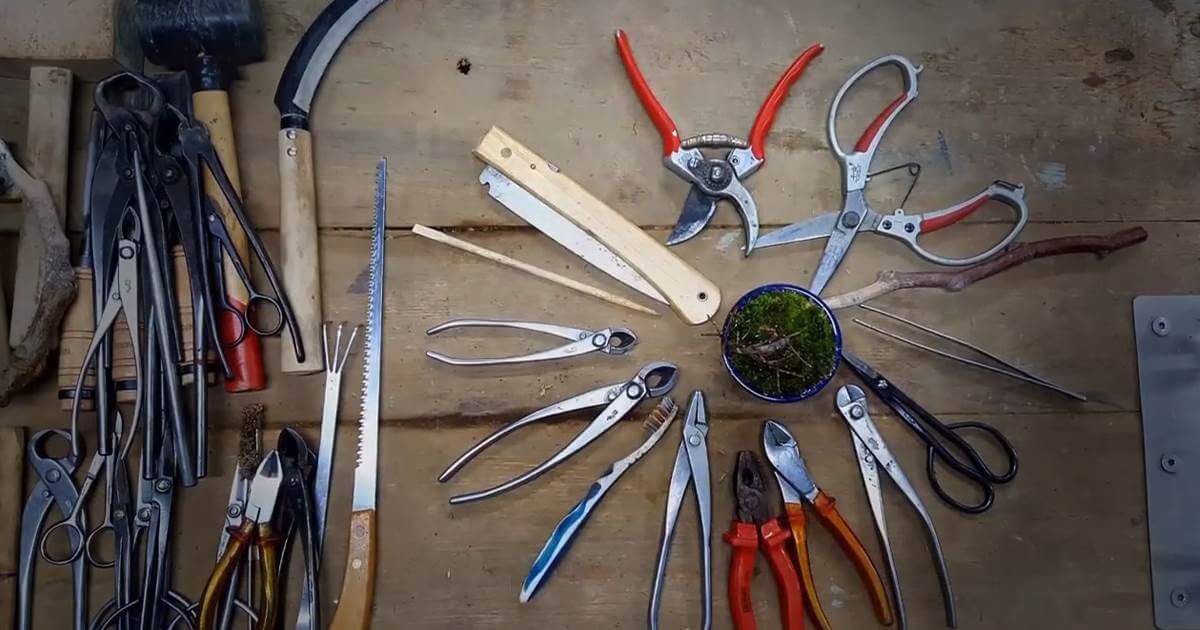
Thank-You Video Has Arrived from a Bonsai Enthusiast in Poland for Custom-Made Tanzaku-Gakes!!
We started overseas business about a decade ago with the hope of letting customers not only in Japan but also around the world be aware of the attractiveness of kakejiku hanging scroll.
Thankfully, we have been able to do business with customers in so many countries, who have given us many words of appreciation.
What a surprise for us this time is that we received a thank-you video from one of those customers!!
We have often received the photographs of kakejikus – ready-made kakejikus customers bought at our shop or others they, for example, requested us to mount artworks on hand into – being displayed in each house. We, however, had never received such a video before. Therefore, it was really a great surprise for us.
In this post, we will present that customer’s story.
Order for Production of Custom-Made Tanzaku-Gakes
from a Bonsai Enthusiast in Poland
The customer this time is a bonsai enthusiast living in Poland.
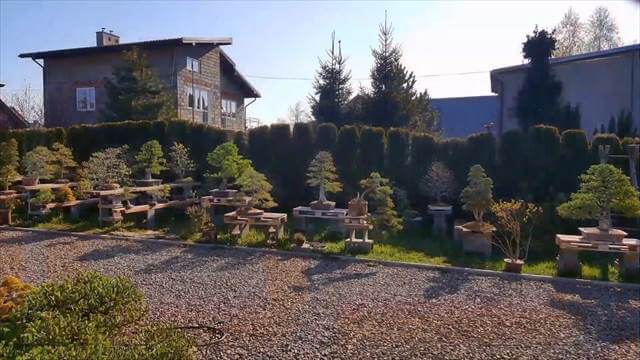
With lots of excellent bonsais, what a wonderful garden it is!
The view is so perfect as to make us feel as if it were in Japan.

In this order, he had requested us to produce custom-made tanzaku-gakes.
‘Tanzaku-Gake’ is the kakejiku hanging scroll to display tanzaku, artistic strips, with a feature of enabling you to enjoy multiple tanzakus on a single hanging scroll by changing tanzaku pieces.
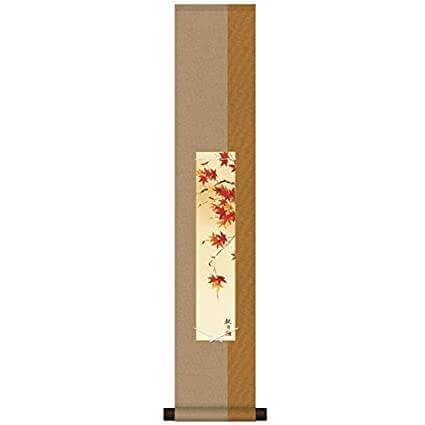
Tanzaku-gake
Strings are attached to tanzaku-gake so that tanzaku to be displayed is inserted into the part of strings as follows:
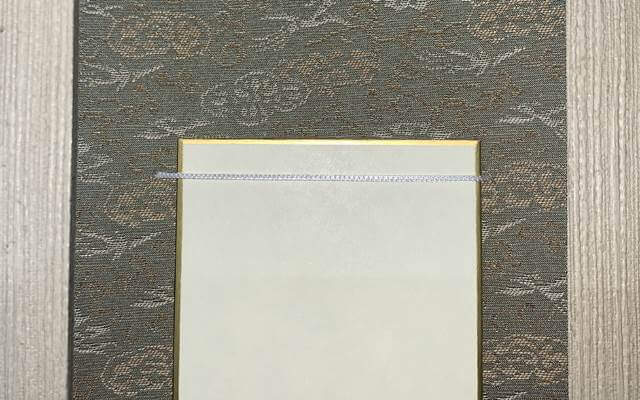
Upper Part of Tanzaku-Gake
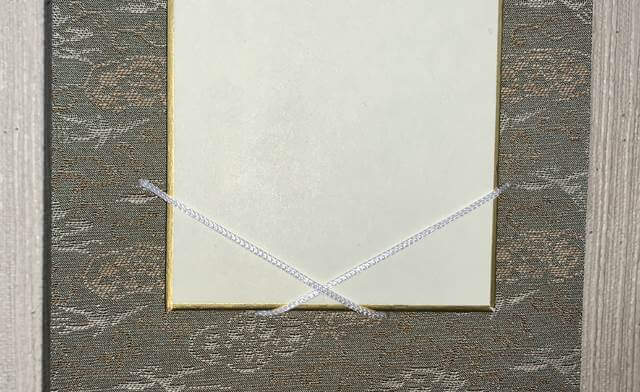
Lower Part of Tanzaku-Gake
Following is the kakejiku called ‘Shikishi-Gake’ to display shikishi, artistic square paperboard, exactly in the same way as tanzaku-gake:

Shikishi-Gake
As for tanzaku-gake and shikishi-gake, we have thankfully received so many inquiries from overseas and have so far received orders from countries such as Canada, Netherlands, Germany, Italy, the U.K., and the U.S.
The Polish customer this time had requested us to produce 2 types of tanzaku-gakes for each of 4 different kinds of tanzakus representing four seasons of spring, summer, autumn, and winter respectively, totaling 8 tanzaku-gakes.
Since how each one of the tanzaku-gakes would turn out was totally up to us, the designing process really had served as good mental exercise.
Followings are the completed tanzaku-gakes:
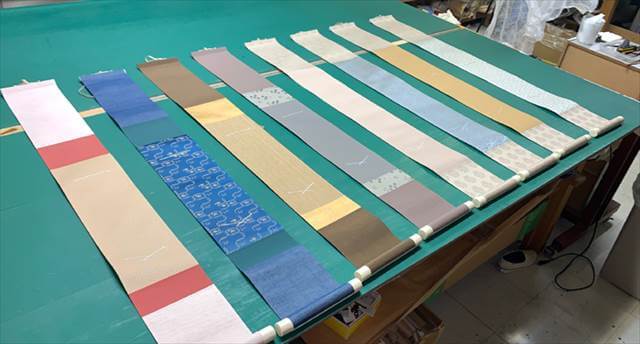
From the left, each represents spring, summer, autumn, and winter, respectively.
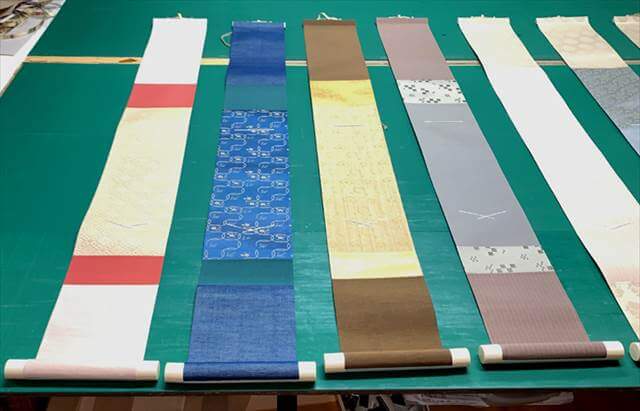
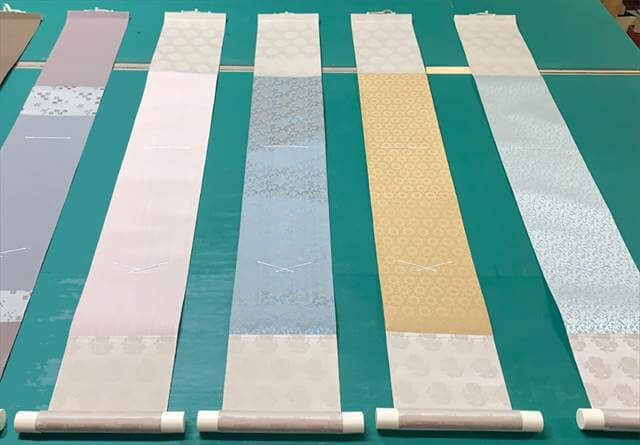
Since main tanzaku works to be displayed were said to be drawn by the Polish customer himself, we sent together blank tanzakus fitting for those completed tanzaku-gakes.
We have been relieved to know that the completed tanzaku-gakes safely reached the customer despite various troubles relating to customs procedures on the Poland side.
Following is the video from the customer:
To be honest, we cannot understand Polish. We can tell, however, at least from the English words ‘Thank You’ appearing in the last part of the video that he is pleased with those tanzaku-gakes.
For customers to express how they have enjoyed our products in each home country hugely motivates us.
We are also extremely happy to receive a video like this, as it surely takes much time and effort to produce it.
We will be pleased to accept orders to produce custom-made tanzaku-gakes like the ones the Polish customer had ordered this time, together with the sales of ready-made tanzaku-gakes.
If you are interested in ordering special tanzaku-gakes catering to your own need or preference even though it would cost a bit more, please feel free to contact us.

